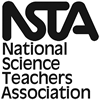Interacting with NSTA colleagues
By Mary Bigelow
Posted on 2013-05-28
 I am the only science teacher at my school and I do not have anyone to ask for help. How can I post a question to all the members of NSTA? (I became a NSTA member in September.) I see there are forums and [e-mail] lists, but I do not know how to participate. For example, right now I’m looking for resources on dissections.
I am the only science teacher at my school and I do not have anyone to ask for help. How can I post a question to all the members of NSTA? (I became a NSTA member in September.) I see there are forums and [e-mail] lists, but I do not know how to participate. For example, right now I’m looking for resources on dissections.
—Chris, Kutztown, Pennsylvania
You may be the only science teacher in your school, but you have thousands of colleagues through NSTA. You’ll find NSTA members are eager to help you and share their experiences and resources—we want all of our students to be successful! In addition to the NSTA blogs, Facebook, and Twitter (#nsta), there are several ways of tapping into this collective expertise:
- NSTA’s Community Forums are threaded discussions on topics submitted by the participants. The forums are divided into Science Disciplines (chemistry, earth and space science, elementary science, general science and teaching, life science, physical science, and STEM) and Pedagogy and Research (evaluation and assessment, new teachers, NGSS, professional development, and research in science education). Choose a forum to examine an existing topic, search for a topic or concept, or post a new topic/question. If you’re looking at an existing topic, you have the option to post your own reply to the group or send a private message to a responder for more information. There is an option to be reminded via e-mail if someone responds to your topic. I searched the community for “dissect” and found several threads that you might start with for your question about dissection:
- Virtual Dissecting (New Teacher forum)
- Teacher-Guided Dissections vs Instruction-Sheet Guided Dissections (Life Science forum)
- Which Dissections Are Best? (Life Science forum)
- Dissections (Life Science)
- Use NSTA’s E-mail List Server (under the Member Services tab) to access group e-mail discussions that allow members to exchange information in a peer-to-peer environment. NSTA members can subscribe to any (or all) of the 14 topic areas: biology, chemistry, computer science, Earth science, elementary, environmental science, general science, pedagogy, physical science, physics, technology education, new teacher, retired teacher, and Next Generation Science Standards (NGSS–the newest list). Colleagues on the list can share ideas, get information, and ask questions. The lists are active 24/7, so information from your colleagues is readily available when you need it. In your case, go to the biology list and ask about activities or lesson plans related to dissections. Include specifics such as the grade level, learning goal, and time frame so your colleagues get a better idea of what you need. I’d suggest setting up a separate e-mail account (e.g., gmail) for the list so your school or personal e-mail accounts don’t get overwhelmed, especially if you subscribe to more than one list.
- NSTA’s SciLinks does not have a keyword for dissection. So another option would be to search NSTA publications. There have been several articles in NSTA journals on the topic of dissection. I’ve put together a collection in the NSTA Learning Center to get you started.
Disclaimer: The views expressed in this blog post are those of the author(s) and do not necessarily reflect the official position of the National Science Teaching Association (NSTA).


